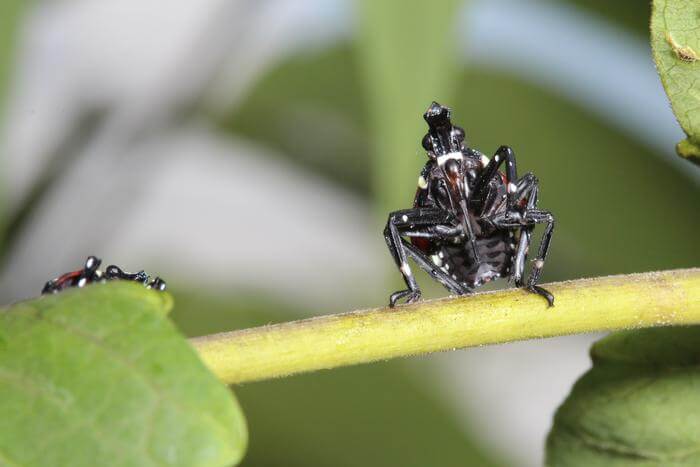In 2012, the arrival of the spotted lanternfly (Lycorma delicatula) in the United States from China raised concerns among scientists, land managers, and growers about potential damage to native and commercial trees. However, new long-term research led by Penn State suggests that hardwood trees, such as maple, willow, and birch, may be less vulnerable to the insect’s feeding than initially feared.
The study, published in the journal Environmental Entomology, aimed to assess the long-term effects of spotted lanternfly (SLF) feeding on hardwood trees. The research team constructed large enclosures containing various tree species, including the insect’s preferred food, the non-native tree-of-heaven (Ailanthus altissima), as well as native trees like silver maple, weeping willow, and river birch. The presence of tree-of-heaven was included in half of the enclosures to investigate whether it would influence the feeding pressure on the native hardwoods.
Within these enclosures, researchers reared different densities of spotted lanternflies throughout their life cycle, from eggs to adults, to determine if the number of insects feeding on a tree would affect its growth and survival. After the first two years, they reduced the insect density to observe tree recovery. The team monitored leaf gas exchange and concentrations of essential nutrients for photosynthesis and growth during the first two years, as well as tree diameter growth over the entire four-year study period.
The study revealed that increased feeding pressure by spotted lanternflies led to reductions in key nutrients, which, in turn, significantly impacted tree diameter growth during the initial two years of intense feeding. However, in the third year, when feeding pressure was reduced, native trees showed signs of recovery, while tree-of-heaven’s growth remained stagnant. Leaf gas exchange did not show significant differences among the treatments.
Kelli Hoover, a professor of entomology at Penn State, emphasized that the study represents a worst-case scenario in which spotted lanternflies fed on the same trees for four consecutive growing seasons. She pointed out that in natural settings, where the insects move frequently among host trees, significant negative impacts on forest or ornamental trees would not be expected.
These findings may provide relief to growers, as Hoover stated, “If I had an apple or peach orchard, I wouldn’t even treat my trees with insecticides because we’ve learned that the insects are not going to stick around, and the cost of treating and the potential non-target impacts of the insecticides are just not worth it.”
The research was supported by the U.S. Department of Agriculture and the Pennsylvania Department of Agriculture.


